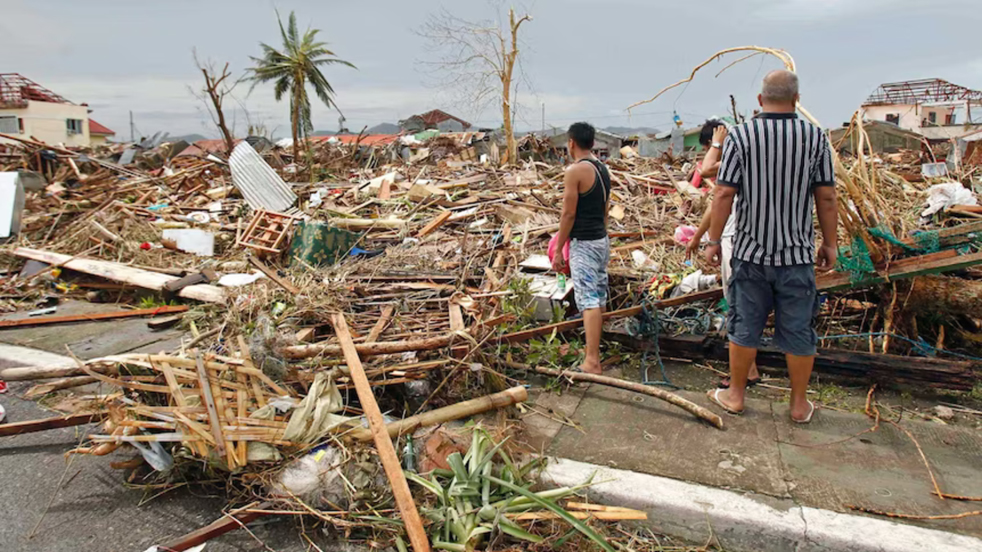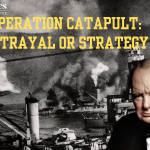Infrastructures are essentially a concrete reflection of human creativity and they are prone to devastations as well, mostly caused by climate calamity. Contemporarily, climate change has evolved into a tangible reality as the wrath of calamity has engulfed the whole globe and their detrimental intensity is increasingly felt on the existing infrastructures which impacts its resilience. Hence, in this era of dynamic infrastructures there is a need for durable initiatives to safeguard their long term sustainability amid escalating ecological risks.
Thus, realising this rising significance of infrastructure resilience, the global initiative of Coalition for Disaster Resilient Infrastructure (CDRI) was nominated at the United Nations (UN) Climate Action Summit at New York in 2019. The inevitability of climatic casualties has steered such a structured approach to tackle tragedies.
This article traces the global initiative aimed to ensure resilience of infrastructures that is essential in order to minimise the shock of disruption and India’s visionary objective behind this initiative. It serves as a fundamental initiative to lead the globe towards a more comprehensive secured structure for a sustainable tomorrow. As Prime Minister Narendra Modi aptly affirmed that ‘no one is safe till everyone is safe! We have to ensure that we leave no community, no place, no eco-system, and no economy behind’.
What is the CDRI?
The Coalition for Disaster Resilient Infrastructure (CDRI) initiative envisions an inclusive global order that was first floated at the 2019 U.N. Climate Action Summit by the Government of India in assistance with the United Nations Office for Disaster Risk Reduction (UNDRR) to mitigate the risks of calamities over infrastructures. It is essentially a global coalition that is composed of governments, multilateral development banks, the United Nations Agencies and their programmes along with corporate stakeholders and academic and research institutions form the core chunk of this collective. It converges annually at the International Conference on Disaster Resilient Infrastructure (ICDRI) platform and fosters a strategic dialogue and articulates a specific theme based agenda to address essential challenges.
This comprehensive collaboration is fundamental to stipulate a collaborative approach to deal with deadly disasters. It aims to ensure the resilience of existing and future infrastructure and seeks to overhaul the infrastructure systems and assets in order to make them shock proof of any future risks. Moreover, the initiative compliments pre-established global goals like the Paris Climate Agreement, the Sustainable Development Goals as well as the Sendai Framework which was adopted amid the United Nations World Conference on Disaster Risk Reduction in 2015. There is a collective sense of ‘environmental stewardship’ to float this initiative to success and stimulate their shared responsibility of sustainability.
Aspirations and Objectives
Any disruption or lack of infrastructure is likely to jeopardise the ongoing course of urbanisation that is deemed essential to sail away from economic stagnancy and overcome long term growth obstacles. Hence, the core aspiration of the CDRI is to address the threats of climate disasters on infrastructure. Thus, the foremost task is to address the knowledge regarding risks and to curate a collective knowledge base. This knowledge sharing strengthens the knowledge capacity among the members and enables a comprehensive and integrated digital data repository in order to tackle the threats efficiently.
Secondly, it is imperative to impart technical training in order to amend and update the existing loopholes. Moreover, rigorous and consistent research is necessary to explore the potential challenges to sail this sustainability coalition to success. An effective technology transfer makes up the core but there lies an apparent barrier in execution of such an elaborate model.
The next major concern is the monetary aid requirement and also investment funds to realise this initiative thus a finance mechanism and culminating resilience fund is a necessary measure. This initiative is fundamental in order to build their resilience against risks.
The CDRI intends to assimilate global knowledge to cultivate infrastructure capacity, hence, since its inception in 2019, it has embarked on a series of trailblazing initiatives. However, the most notable among them is its concern for the Least Developed Countries (LDCs), Landlocked Developing Countries (LLDCs), and Small Island Developing States (SIDS) who are more vulnerable to the magnitude of disaster as they lack the capacity to efficiently deal with disasters.
Hence, in 2021 amid the 26th session Conference of Parties (COP26) at Glasgow, PM Modi jointly (with leadership of Australia, Fiji, Jamaica, Mauritius and the United Kingdom) launched the dedicated initiative of “Infrastructure for Resilient Island States (IRIS)”, that catered the needs of the Small Island Developing States (SIDS) where urgency of power grids, climate proof ports along with coastal safeguarding. As it is evident that the most vulnerable nations who are more prone to risk of calamity are island nations and littoral states, hence, this initiative aids their sustainability and resilience. Moreover, the latest theme of the ICDRI is also based on ‘Shaping a Resilient Future for Coastal Regions’.
Subtle Diplomacy of India
CDRI is the major global initiative launched by the Government of India and is seen as India’s attempt to obtain a global leadership role in climate change and disaster resilience matters. Prime Minister Modi preached (that) ‘What we need is a global people’s movement to bring about behavioral change; need, not greed is our guiding principle. So, therefore India is here today to present a practical approach and roadmap’. Albeit, the initiative has a philanthropist essence but deep within it also has traces of soft diplomacy.
Structure of CDRI
The foundation of CDRI has anchored the global perception of India as a proactive player in the arena of climate change. It is sheerly evident in the triad structure governance of CDRI. It is composed of the Governing Council i.e. the apex deciding body India reserves a permanent co chair, alongside rotational co chair, secondly; the Executive Committee which oversees efficient executions of strategies and lastly, the Secretariat that is is based in New Delhi that tackles technical operations and coordination.
This structure reflects India’s prime positioning in global climate governance where it is not projecting a selfish agenda rather promoting a global good. This initiative influences cooperation rather than coercion. Alongside, appealing this initiative as altruistic, it is also a subtle form of diplomacy in commanding the global narratives.
The latest theme of ICDRI showcases solidarity with the global south nations. The theme Resilience of Coastal regions is an assertive stance as it is the states of global south who faced the brunt of structural inequalities. Their proneness to vulnerabilities stems from rapid industrialization that was spearheaded by the developed western bloc, yet, the wrath of climate calamity is global.
The carbon abuse by the western bloc burdened the shoulders of global south nations. Thus, balancing the stakeholders amid this inequality raises India as a broker among the antagonistic players. It seeks cooperation among the conflicting cohorts in order to navigate the crevices of climate change safely and efficiently. Rather this initiative has been embraced beyond the artificial distinctions like West, Global South or underdeveloped nations etc. The arena of climate is altogether inclusive but the CDRI Initiative is a deliberate holistic path towards a sustainable future. It is rather altruistically modelled where any debacle is handled collectively where the risk is not bound by boundaries rather an unison effort is extended to efficiently deal with devastation.
Positioning of India
Globally, the sustainability trajectory is sound. The International Solar Alliance (ISA) and the Coalition of Disaster Resilient Infrastructure (CDRI) is often perceived as a two fold initiative by India maneuvering multilateral institutions. India seeks to mobilise comprehensive efforts to address global calamities. While the former lures the attention of developed nations, the latter finds affinity with the global south nations. Hence, this promotes the positioning of India globally where a positive perception enables it to maneuver diplomacy strategically. In conclusion, the inevitably of climate casualties has driven towards such structured preparation.
This India orchestrated initiative upholds the spirit of altruism; there is a strategic objective as well. Albeit that is neither driven pessimistically as it advocates for a world of global commons. Hence, amid exacerbating climate risks, the CDRI Initiative has emerged as the most substantial effort in securing sustainability. The success scope of this initiative lies among the vision and efforts of the cohorts in order to curate a sustainable future.
Additional references:
https://www.icwa.in/show_content.php?lang=1&level=3&ls_id=9924&lid=6344




